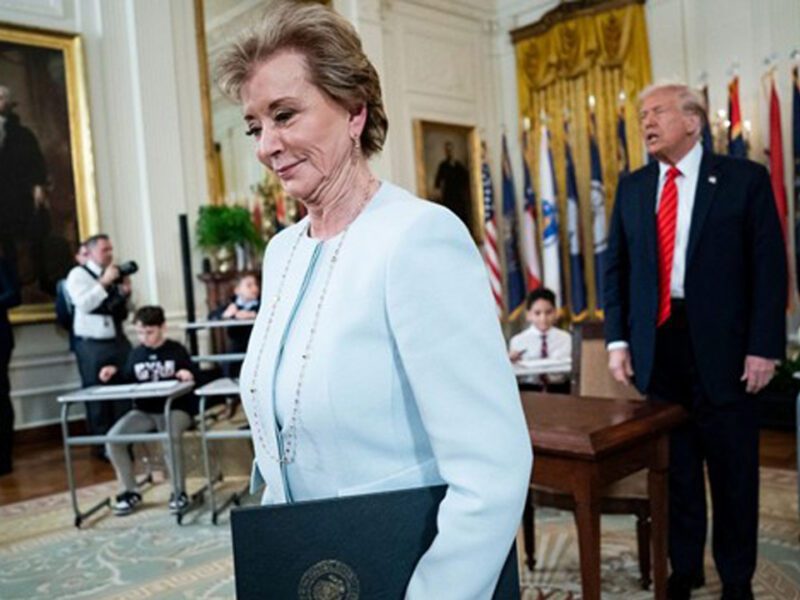Why Many Schools’ Strict Cellphone Policies May Not Go Far Enough
Education Week | By Elizabeth Heubeck | July 18, 2024
A national advocacy group says schools need all-day bans on devices
School-age children have never known a time without cellphones. And they increasingly can’t imagine being without theirs—even at school.
Cellphones have fast become the single largest distraction in classrooms across the nation, causing a growing number of education leaders and policymakers to consider or enact policies limiting their access during the school day.
Most of those policies stop short of total cellphone bans in schools. Among the policies recently implemented at the state level, some “strongly encourage” limitations on cellphone use, while others limit bans to instructional time only. Some leave it up to districts to decide. Such policies don’t go far enough, argues the nonprofit advocacy group Phone-Free Schools Movement.
Parents Sabine Polak, Mileva Repasky, and Kimberly Whitman co-founded the organization and recently partnered with national nonprofit Fairplay to push for total cellphone bans at K-12 schools. Drawing on research from pediatric health and media experts and interviews with dozens of school administrators, Phone-Free Schools Movement this week launched a free online tool kit designed to guide school administrators in designing effective cellphone-free policies.
In an interview with Education Week, Whitman shared why she and the Phone-Free Schools Movement’s co-founders felt compelled to form the organization, what they learned from administrators they interviewed while developing the cellphone-policy tool kit, and why she’s adamant that such policies need to be in place “from the first bell to the last bell.”
This interview has been edited for length and clarity.

Kim Whitman
How did the Phone-Free Schools Movement come about?
Sabine, Mileva, and I met through Fairplay’s Screen Time Action Network, where we are all members of the Screens in Schools work group. With our combined experience as parents of eight children ages 7 to 17, we were witnessing firsthand the negative impacts of phones on them and their friends, especially the distractions and harms during the school day.
When our school districts were unwilling to address the concerns, we decided to advocate at a national level. After a year of researching the impacts of phones in schools, speaking with school administrators, and connecting with experts and other nonprofits, we established the Phone-Free Schools Movement in 2023.
Who have been your organization’s biggest champions, and how have they shown their support?
Both parents and teachers have reached out to us eager to support our campaign, which led to the development of our ambassador program. Today, we have over 80 ambassadors across the U.S., with some in Canada and other countries as well. As PFSM ambassadors, they advocate for all-day phone-free policies in their areas and provide local school districts with PFSM resources to support the transition to phone-free schools.
Your nonprofit just released a phone-free school tool kit for administrators. Why?
Through our conversations with administrators, we discovered a significant disconnect between schools hesitant to implement all-day phone-free policies and schools with successful policies already in place. Many administrators without such policies feared parent pushback, while those who had implemented all-day phone-free policies reported minimal parent resistance.
Recognizing this, we saw the need to develop a clear road map to help administrators execute successful policies.
Who did you speak with to inform the tool kit?
We spoke primarily with principals, as well as teachers and parents, because phone-free policies were typically school-based rather than districtwide; this necessitated direct conversations with individual school principals.
Additionally, we also reached out to state and federal legislators, the U.S. Department of Education, the surgeon general’s office, experts like Jonathan Haidt (who is now on our advisory board), and other nonprofits in this space.
What did administrators share about challenges to implementing cellphone policies?
Some administrators expressed fear of parent pushback. But administrators with phone-free policies in place reported minimal resistance from parents—in fact, they found that the majority of parents were highly supportive of these policies.
Additionally, some districts mentioned that they lacked funds for purchasing Yondr or other phone lockers. These are critical to cellphone policies, but they do have a cost associated with them. More economical options include alphabetized manilla envelopes or labeled pencil pouches stored in baskets.
What were your biggest takeaways about effective cellphone policies?
Administrators with effective policies highlighted three critical elements for successfully eliminating cellphones from schools: transparent communication, a rock-solid policy, and consistent enforcement by teachers and staff.
The school must be transparent with stakeholders about why there is a need for a phone-free policy and the research behind it. Having these conversations early on is very effective in bringing everyone on board. We recommend two months of planning prior to implementing the policy. During this time, it is important to host informational meetings for all the stakeholders—staff, parents, and students—that allow them to ask questions and understand the necessity of an all-day phone-free policy.
[A rock-solid] policy extends from the first bell to the last bell—the entire school day. So, during the school day, students’ phones and other personal electronic devices such as smartwatches, Airpods, etc., must be locked away. Research indicates that phones can’t be on the person for the policy to be effective. Students can’t resist the urge to check the continual notifications they receive when the phone is in their pocket or backpack.
The policy needs to be building-wide; teachers need administrator support. It’s impossible for teachers to win the battle in the classroom when they are policing it on their own. All teachers must enforce the policy, or it breaks down and is ineffective. Finally, consequences to policy breaches must include removal of the student’s phone.
Any other takeaways for schools seeking to implement effective cellphone policies?
Some schools have purchased Jonathan Haidt’s book The Anxious Generation for their entire staff. That allows teachers to understand the research and the “why” behind implementing a policy.
We have also discovered that schools with bell-to-bell phone-free policies have improved teacher retention.
How satisfied are you with the progress schools are making toward implementing successful cellphone policies?
The progress some schools and districts are making in implementing cellphone policies shows a growing recognition of the issue. But there’s still a long way to go. Many policies are inconsistent and only partially enforced, which diminishes their effectiveness. For true success, we need widespread adoption of comprehensive, all-day phone-free policies, supported by thorough communication and consistent enforcement. Only then can we fully address the impact of cellphones on academic learning and social development.
What more needs to happen to meet this goal?
Federal legislation, like the Focus on Learning Act proposed by Sens. Tom Cotton, [a Republican], and Tim Kaine, [a Democrat], would significantly advance this cause. Also, Congress must pass the Kids Online Safety Act as well as endorse the surgeon general’s call for warning labels on [social media platforms].
Lastly, those concerned about children’s mental health could frame and fund phone-free school policies as an upstream prevention tool. Every child deserves a safe school environment.






